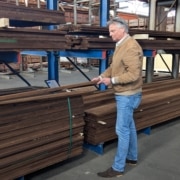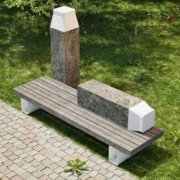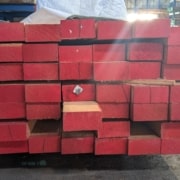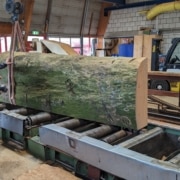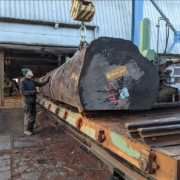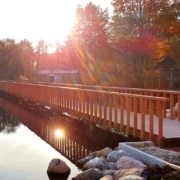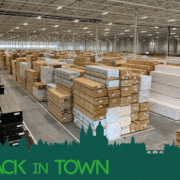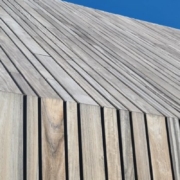Ref.: PvdH/Secr
Dated: June 29, 2021
Press release Royal VVNH 'The special timber market situation with rising prices continues'.
Almere, June 29, 2021 Although recent newspaper reports reported falling timber prices in the USA - to still very high price levels - this in no way reflects the situation in Europe and the Netherlands. Wood and panel material importers are still confronted with further rising prices from their suppliers when purchasing for the next six months. Although the balance between supply and demand will return, this is a situation that is expected to continue for the next six months.
The main causes have not changed significantly since the start of the special market situation. The underlying cause is and remains the global Corona pandemic, which has caused production capacity to be reduced here and there. In addition, the US tariffs on Canadian timber ensured that both Chinese and American traders managed to find European sawmills from May 2020 and noticed that European timber prices were more attractive and therefore started purchasing extensively - especially in Germany. The global dislocation of containers resulted in container rates from the Far East to Europe increasing dramatically from December 2020. The Suez Canal blockage has certainly not improved the situation, but unfortunately the price normalization for container freight expected earlier this year has not yet occurred.
Although the main causes mentioned apply to almost all wood and panel materials, the large range also causes some differences. Although softwood production in Scandinavia has increased considerably in the first months of 2021 compared to the same period in 2020, stocks are lagging behind over the same comparable period. Despite record production in Scandinavia, stocks there are still historically low. It is noted that the sawmills have already been sold out for Q-3 of 2021 and that the shortage is expected to continue until Q-4. The effect on the price will vary, but price increases for 45% compared to previously implemented price increases have already been noted. Now that the price level in the USA is declining, the question is how German sawmills will respond to this in the long term. This may increase availability for Europe again, but the effect – if it occurs at all – will not become apparent until or after Q-4 2021.
Paul van den Heuvel, director of VVNH: 'The current market situation presents the sector with a special challenge, but the members of the VVNH have still been able to properly supply their regular customers. In addition, as Gert Jan Nabuurs professor WUR recently published, 1 billion m2 grows annually in European forests3 of which 600,000 m3 is harvested. It is estimated that for 300,000 timber-framed homes approximately 15 million m3 is needed. There is therefore no shortage of forest areas, timber supplies and timber construction options. We are on the right side of the line with sustainably produced wood products and it is expected that the balance between supply and demand will certainly return.'
Partly because of the different regions of origin, hardwood and panel material products have their own market dynamics. The container shortage and increased freight costs have a direct impact on both the supply and the price of various wood products. Sea freight rates have now risen to unprecedented levels and it is now expected that this will continue at least until early 2022. Malaysia has been in lockdown since early June '21 and an extension has recently been announced. The country is the most important supplier of wood species for the Dutch carpentry industry for the production of windows, frames and doors, among other things. The developments result in price increases ranging from 40% to 50% on top of the increases already implemented.
Hardwood from Africa for construction and especially civil engineering has increased in price much less in percentage terms than softwood, but this continent is also faced with production and logistics problems (locally and to Europe), with increases in export taxes and with higher round wood prices by an attracted market in the Far East. These factors have led to a higher price level, which is now expected to stabilize at current levels.
It can be concluded that the supply of wood products across the board from the production countries is scarcer than desired and that sawmills and producers have and are implementing significant increases on softwood, hardwood and panel materials. On top of this, there are still exceptionally high container rates for shipments from the Far East. As a result, cost prices have risen faster than sales prices, which is why it is expected that Dutch timber traders will start calculating with the replacement value.
Van den Heuvel: 'Our members naturally inform their customers directly about the situation so that they can respond as best as possible with their production processes and projects. It is the function of the timber trade to maintain availability so that the timber continues to find its way into great projects.'
Note for editors: For more information, please contact Paul van den Heuvel, director of Royal VVNH E. p.vandenheuvel@centrumhout.nl | T. 036-5321020.

